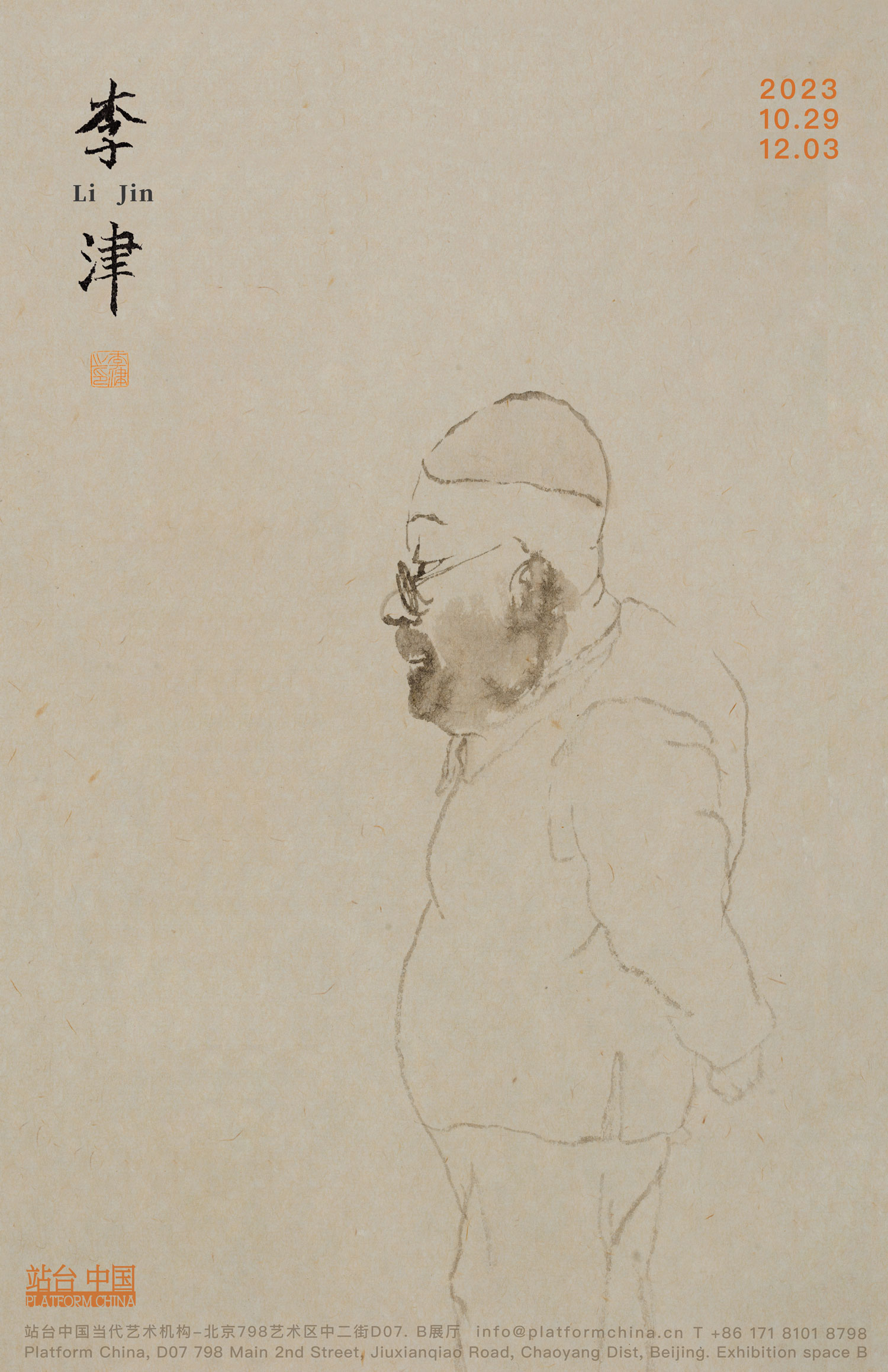展期 Period:
2023.10.29—2023.12.3
艺术家 Artist:
地点 Venue:
站台中国当代艺术机构 Platform China Contemporary Art Institute
新闻稿 Press Release:
站台中国当代艺术机构将于 10 月 29 日在 B 展厅呈现李津在站台中国的第二次个展。
李津作为展览的主题,意为去更深入地认识他。他一直把自己的生命经验直接注入到笔端,植身入画境,画境也拌入他的生活。迥异的身份与画意中,是丰富的世界与现实。他时而是一位山中高人、时而是一名身处异乡的美食家、时而化身一只享受露水与草叶的小虫,时而用一棵须发舒展的萝卜自娱。这是对“我”的感知,是真实心性的流露。笔墨中有他的审慎和放纵,一如时而成为屈子,时而与佳人成双的模样。我们极少在作品中看到如此多样的,如此赤裸的对于自我的展露。不仅是对于食色性也,也是对于生命的理解。他在创作中与自我相处,在创作中寻求自己的存在。笔墨因而成为一种旁滤外界观看的通道,以厘清向内的目光。
李津在文人的传统中延续,以辞赋经文偈语为题跋。但他画的是当代人的生活,更是在地的生活。生活本身由诸多琐碎、诸多跌宕起伏组成,有气氛的高潮,也有自处时的留白与低语,它们正在发生。在李津的笔下,既有欢聚、宴饮,也有静默、虔诚,同样也有烟火气十足,或者田园牧歌般的生活细节。这些物和景与人一般出神,仿佛被赋予了坚实的骨骼。
李津一贯诚实的面对生活和绘画,从而构成了他工作的丰富与连贯性。水墨有着落笔成形的特性,不宜反复修改,最终以时间为轴心形成纵深。这得益于李津近十年不曾间断进行中的“日课”,晨起作画、抄经,寥寥数笔勾勒、点染间,所思所想就业已浮现。饱满旺盛的欲望与情感在李津的绘画中同样不可或缺。这些多元的题材类目作为数个坐标,在展览结构中共同织就了一张大网,引出其作品内部的递进与变革,组建起一个立体而饱满的“人”。
李津认为“人要大于你自己”。在对于生活的欲望之外,还应有着对于自身创作永恒而澄澈的欲望。在如今的年龄,时间的沉淀使他愈加获得平和与自我确信。入画的场景和情节总是后错的,李津画的是过去的时光,而非未来的预言。递进的笔墨勾勒出人的生命和生活,而其中所真正充盈的则是内心的气量。持续的自我挖掘,如同开垦一片未来楼宇的地基,越扎实、越拥有迈入天际线的可能。他时而置身生存,时而仰望星空。
Platform China Contemporary Art Institute will present Li Jin's second solo exhibition at Hall B on October 29th.
The exhibition, titled "Li Jin," aims to provide a deeper understanding of the artist. Li Jin has always injected his life experiences directly into his art, merging his existence with his creations. In his art, we find a rich world interwoven with his unique identity and perceptions. At times, he portrays himself as a hermit in the mountains, at other times, he transforms into a food connoisseur in a foreign land. He can even become a small insect that enjoys the dew and grass, or a radish with splayed hair, amusing himself. These are reflections of his self-perception, a true manifestation of his inner self. His brushwork embodies both his careful precision and moments of abandon, akin to the changing roles he takes on, at times resembling Qu Yuan, and at other times, walking in tandem with a beloved companion. We seldom encounter such diverse and raw selfexposure in artworks. This applies not only to matters of culinary and sensuality but also extends to a profound understanding of life. In his creative process, Li Jin engages with himself in the process of creation, seeking his own presence and identity. His brushwork becomes a gateway for outsiders to peer inward with a clear introspective gaze.
Li Jin continues the tradition of literati, often inscribing his works with verses and prose. However, he depicts contemporary life, rooted in the local culture. Life is composed of countless fragments, with various crescendos, as well as moments of silence and whispering conversations—they are all in progress. In Li Jin's works, we can find gatherings, feasts, as well as moments of silence and devotion, juxtaposed with lively and rustic life details. These objects and scenes, like people, seem to have been endowed with solid bones.
Li Jin's honest confrontation with life and painting constitutes the richness and coherence of his work. Ink painting has the characteristic of forming with the first stroke and should not be repeatedly modified. Ultimately, it evolves with time as the central axis into a deeper dimension. This is thanks to Li Jin's uninterrupted "daily practice" for nearly a decade, which involves painting and copying scriptures from dawn. With just a few strokes, his thoughts and ideas come to life. The vigorous desires and emotions are indispensable in Li Jin's painting. These various themes serve as multiple coordinates within the exhibition's structure, weaving a broad network that leads to the progression and transformation within his works, forming a three-dimensional and vibrant "self."
Li Jin believes that "a person should be greater than oneself." Beyond the desire for life, there should also be an eternal and clear aspiration for one's creative self. With age, life experiences have endowed him with tranquility and self-assurance. The scenes and situations within his art are always post-factual. Li Jin paints the times gone by, not future predictions. The progressive brushwork outlines human life and existence, but what truly fills the art is the depth of his spirit. Continuous self-discovery is like laying the foundation for a future skyscraper—only by making it firmer can one hope to reach higher. At times, he immerses himself in life, and at other times, he gazes upward at the stars.

